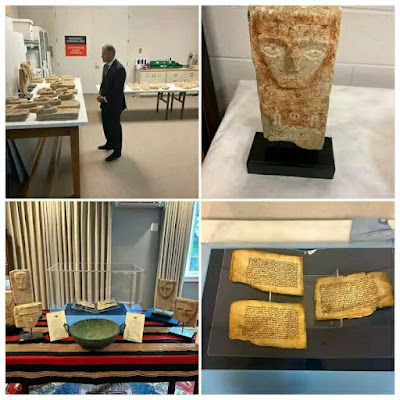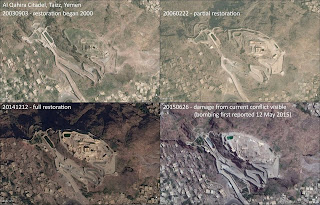 ali aboutaam,Phoenix Ancient Art,south arabian,Yemen
ali aboutaam,Phoenix Ancient Art,south arabian,Yemen
 No comments
No comments
Phoenix Ancient Art: A Summer of Legal Entanglements and Tax Showdowns
ARCA summers are pretty busy as each year. Since 2009, the Association has hosted its multi-course Postgraduate Certificate Program in Art Crime and Cultural heritage which often means posting new developments in the art and antiquities crime sphere slow while we turn our attention towards trainees. Now that the 13th edition of this annual PG Cert has concluded, we can take time to reflect on some of the summer's more interesting art and antiquities stories, two which involve the ancient art gallery, Phoenix Ancient Art.
More pieces, More Accusations
Back on the 15th of May, Gotham City, a French-speaking Swiss news website that focuses on white-collar crime reported that Ali Aboutaam, the Geneva-based ancient art dealer was again in hot water with the public prosecutor's office. Despite his previous conviction in January 2023, where he received an 18-month suspended prison sentence, Ali Aboutaam is again the focus of a new Swiss investigation.
According to the Geneva public prosecutor's office, Ali is alleged to have possessed two suspect alabaster (brucite) statues, representing a man and a woman, while, according to Gotham's reporting, he “knew that these cultural properties had been illicitly acquired during illegal excavations in Yemen”. Assessed by art historians, at least one of the small statues is believed to come from an area located in the southern Yemeni plateau known for the immense Himyarite Kingdom . The area is home to a large necropolis, Shuka, which dates to the 1st-3rd centuries CE and has been the focus of looting in varying periods.
 |
| Dat-Hamin Stele |
In their research to prepare for their upcoming auction, Sotheby's staff discovered that the stele had been photographed and documented as a part of the Aden Museum's collection in Yemen. The artefact had been looted in July 1994 during what is referred to as the Summer War, a civil war fought between the two Yemeni forces of the pro-union northern and the socialist separatist southern Yemeni states and their various supporters. Relinquished by the dealers, U.S. Immigration and Customs Enforcement (ICE) ultimately seized the stele in September 2003, and the stela was officially signed over to the Yemeni ambassador in December 2004.
Following that civil war, Yemen implemented wider legal protections for its cultural heritage, although instability resulting from the present-day civil war continues to make enforcement difficult. Law Number 21 of 1994 on Antiquities, as amended by Law Number 8 of 1997, is the primary law governing ancient sites and objects in the country.
This law defines Yemen's “archaeological” materials; vests their ownership in the State, and controls their protection, conservation, restoration, and study. It addresses aspects of ownership, permissions and obligations for archaeological work, introduces penalties for the illegal trade, and sets duties and guidelines on how to deal with discovered and excavated objects.
As such, it will be interesting to evaluate what documents Phoenix possesses in support of their circulation of these two objects in Switzerland, which are presently of interest to that country's public prosecutor.
Moving on to Taxes...
On 18 July 2024 Switzerland's Bundesgericht, the country's Federal Supreme Court in Lucerne issued several ruling impacting Ali Aboutaam. Judgments 9C_107, 9C_184, 9C_187 and 203/2023 of 18 July 2024, issued by Federal Judges Thomas Stadelmann as the Presiding Judge, along with Judges Margit Moser-Szeless and Michael Beusch, rejected a series of complex appeals, made through the art dealer's attorneys, concerning outstanding tax assessments in relation to the importation of a group of antiquities, some housed outside the gallery and outside the Ports Francs et Entrepôts de Genève.
In rejecting Aboutaam's appeals, the higher court's final rulings reaffirms that the Swiss-based brother has to pay approximately 3.5 million Swiss francs ($4,125,444.82) in outstanding value-added tax (VAT), as assessed by the Bundesamt für Zoll und Grenzsicherheit (Federal Customs Administration) and largely affirmed by the Federal Administrative Court. Ali was also ordered to pay late interest payments totalling approximately 900,000 Swiss francs (another $1,060,995.36).





































